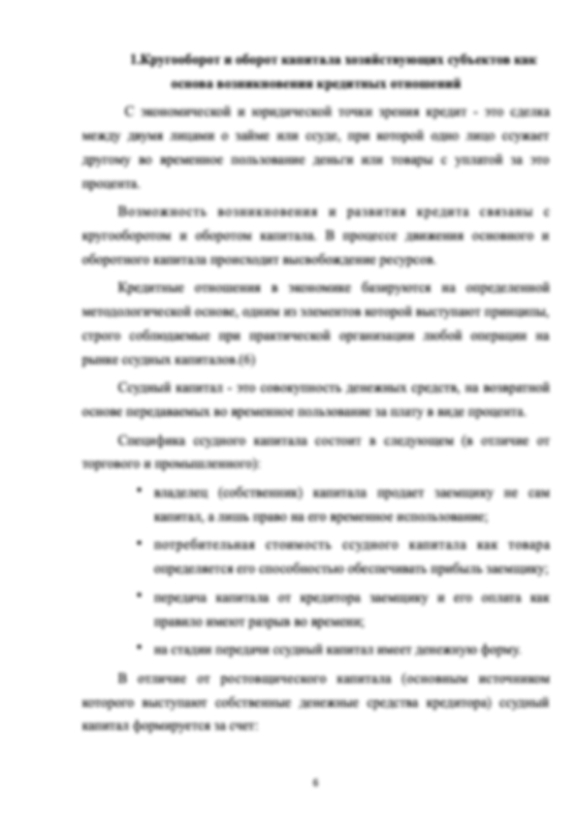Отличная работа! Автор молодец, выполнила все согласно требованиям и очень профессионально. Спасибо!
Информация о работе
Подробнее о работе

Обзор литературы по проблеме контролируемое употребление «легких» наркотиков.
- 10 страниц
- 2017 год
- 62 просмотра
- 0 покупок
Гарантия сервиса Автор24
Уникальность не ниже 50%
Фрагменты работ
Наркотизм – это комплексное явление, сочетающее в себе одновременно целый ряд различных аспектов – экономический, социальный, культурологический, психологический, медицинский и т.д.
Контролируемое употребление «легких» наркотиков существует для восстановления нормального самочувствия в медицинском смысле, а в социальном смысле, контролируемое употребление наркотиков – разработка индивидом лично для себя определенных правил применения и признаков, побуждающих к временному отказу и взвешенное, рациональное его использование. [4]
Глава 1 Обзор литературы по проблеме контролируемое употребление «легких» наркотиков.
Наше исследование осуществляется с перспективы потребителей наркотиков и сфокусировано на нижнем уровне розничной продажи, или конечного распределения наркотических веществ. Изучению подлежит только группа «нетяжелых» наркотиков – гашиш, марихуана, а также синтетические наркотики (MDMA, амфетамин, экстази и др.).
В работе представлено анализ зарубежных и российских источников. Всего проанализировано 26 научных работ.
За работу получила 5. Работа оформлена и плагиат был сделан. 75%
Список использованной литературы
1. Aujla H, Martin-Fardon R, Weiss F. Rats with extended access to cocaine exhibit increased stress reactivity and sensitivity to the anxiolytic-like effects of the mGluR 2/3 agonist LY379268 during abstinence. Neuropsychopharmacology. 2007;33:1818–1826.
2. American Psychiatric Association. Diagnostic and Statistical Manual of Mental Disorders (DSM-5). Fifth Edition. Washington: American Psychiatric Association; 2013. 991 p
3. Arnold EM, Desmond KA, Rotheram-Borus MJ, Scheffler A, Comulada WS, Johnson MO, et al. Drug use and emotional distress differentiate unstably-versus stably-housed adults living with HIV who engage in unprotected sex. J Health Psychol 2015; doi:10.1177/1359105315603465
4. Bergström, CA; Andersson, SB; Fagerberg, JH; Ragnarsson, G; Lindahl, A (16 June 2014). "Is the full potential of the biopharmaceutics classification system reached?". European Journal of Pharmaceutical Sciences. 57: 224–31
5. El-Seedi HR, De Smet PA, Beck O, Possnert G, Bruhn JG (October 2005). "Prehistoric peyote use: alkaloid analysis and radiocarbon dating of archaeological specimens of Lophophora from Texas". J Ethnopharmacol. 101 (1–3): 238–426
6. Faggiano F, Minozzi S, Versino E, Buscemi D. Universal school-based prevention for illicit drug use. Cochrane Database Syst Rev 2014;12:CD003020.
7. Frankenhauser M. Psychobiological aspects of life stress. In: Levine S, Ursin H, editors. Coping and Health. Plenum Press; New York: 1980. pp. 203–223.
8. Fox HC, et al. Enhanced sensitivity to stress and drug/alcohol craving in abstinent cocaine-dependent individuals compared to social drinkers. Neuropsychopharmacology. 2008;33:796–805.
9. Golding JF, Groome DH, Rycroft N, Denton Z. Cognitive performance in light current users and ex-users of ecstasy (MDMA) and controls. Am J Drug Alcohol Abuse 2007;33:301–307.
10. Klein J, Phillips DL. From hard to soft drugs: temporal and substantive changes in drug usage among gangs in a working-class community. J Health Soc Behav 19
68;9:139–145.[Crossref], [PubMed], [Web of Science ®], , [Google Scholar]
11. Marion NE, Oliver WM. Drugs in American society: an encyclopedia of history, politics, culture, and the law: an encyclopedia of history, politics, culture, and the Law. ABC-CLIO; 2014. 1163 p
12. Parker, H. (2000). How young Britons obtain their drugs: Drugs transactions at the point of consumption. In M. Hough & M. Natarajan (Eds.), Illegal drug markets: From research to prevention policy (Crime prevention studies, Vol. 11). New York, NY: Criminal Justice Press. с. 28.
13.Potter, G. R. (2009). Exploring retail-level drug distribution: Social supply, “real” dealers and the user/ dealer interface. In Z. Demetrovics, J. Fountain, & L. Kraus (Eds.), Old and new policies, theories, research methods and drug users across Europe. Lengerich, Germany: Pabst Science Publishers. с. 68.
14. Potter, G. R. (2009). Exploring retail-level drug distribution: Social supply, “real” dealers and the user/ dealer interface. In Z. Demetrovics, J. Fountain, & L. Kraus (Eds.), Old and new policies, theories, research methods and drug users across Europe. Lengerich, Germany: Pabst Science Publishers.
15. .Pearson, G., & Hobbs, D. (2001). Middle market drug distribution (Home Office Research Study 224). London, England: Home Office.
16. Ritter, A. (2005). A review of approaches to studying illicit drugs markets (DPMP Monograph 8). Mel- bourne, Victoria, Australia: Turning Point Alcohol and Drug Centre.
17. Sobiecki, Jean-Francois (July 2012). "Psychoactive Spiritual Medicines and Healing Dynamics in the Initiation Process of Southern Bantu Diviners". Journal of Psychoactive Drugs. 44 (3): 216–223.
18. Schluger JH, et al. Altered HPA axis responsivity to metyrapone testing in methadone maintained former heroin addicts with ongoing cocaine addiction. Neuropsychopharmacology. 2001;24:568–575
19. Taylor M., Potter G. R. (2013). From “Social Supply” to “Real Dealing”: Drift, Friendship, and Trust in Drug-Dealing Careers. Journal of Drug Issues. 43(4). c. 392-406. Reprinted in James Inciardi and Karen McElrath (eds) The American Drug Scene 7th ed (forthcoming). Oxford: Oxford University Press.
20. Teale P, Scarth J, Hudson S (2012). "Impact of the emergence of designer drugs upon sports doping testing". Bioanalysis. 4 (1): 71–88.
21. Tupper KW (2012). "Psychoactive substances and the English language: "Drugs," discourses, and public policy". Contemporary Drug Problems. 39 (3): 461–492
22. Tschann JM, et al. Initiation of substance use in early adolescence: the roles of pubertal timing and emotional distress. Health Psychol. 1994;13:326–333
23. Tzanetakis, M. (2018). Social order of anonymous digital markets: Towards an economic sociology of cryptomarkets. In: Potter, G., Fountain, J., Korf, D. (Eds.): Place, space and time in European drug use, markets and policy. Lengerich: Pabst Science Publishers. с. 64
24.World Health Organization. The ICD-10 Classification of mental and behavioural disorders: diagnostic criteria for research. Geneva: World Health Organization; 1993. 248 p.
25. Wouters M, Benschop A, van Laar M, Korf DJ. Cannabis use and proximity to coffee shops in the Netherlands. Eur J Criminol 2012;9:337–353.
26. White F, Hu XT, Henry DJ, Zhang XF. Neurophysiological alterations in the mesocorticolimbic dopamine system during repeated cocaine administration. In: Hammer R, editor. The Neurobiology of Cocaine: Cellular and Molecular Mechanisms. CRC Press; Boca Raton, FL: 1995. pp. 95–115.
Форма заказа новой работы
Не подошла эта работа?
Закажи новую работу, сделанную по твоим требованиям


